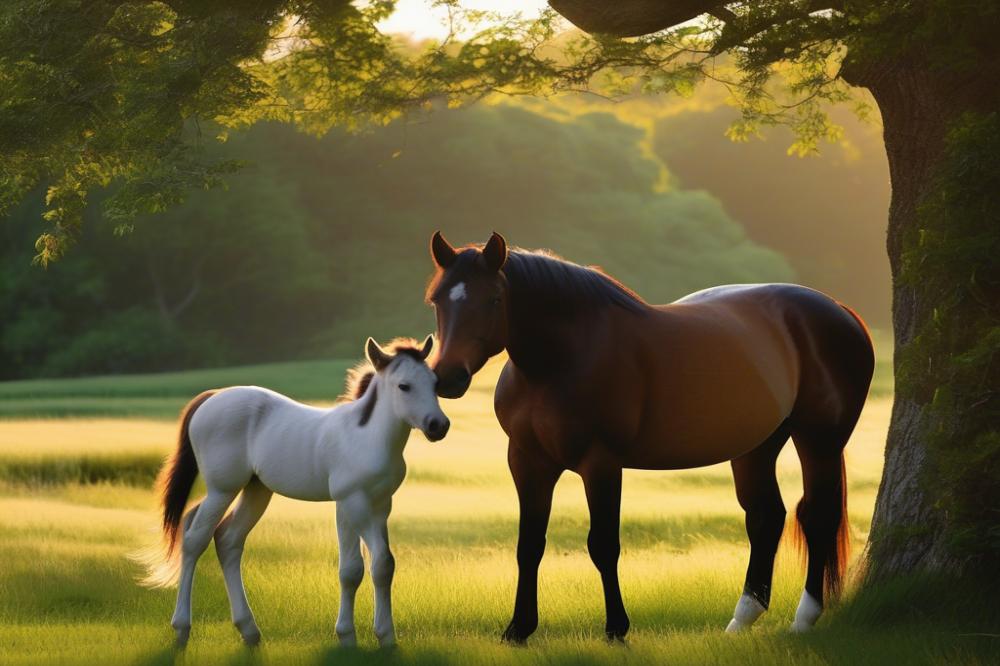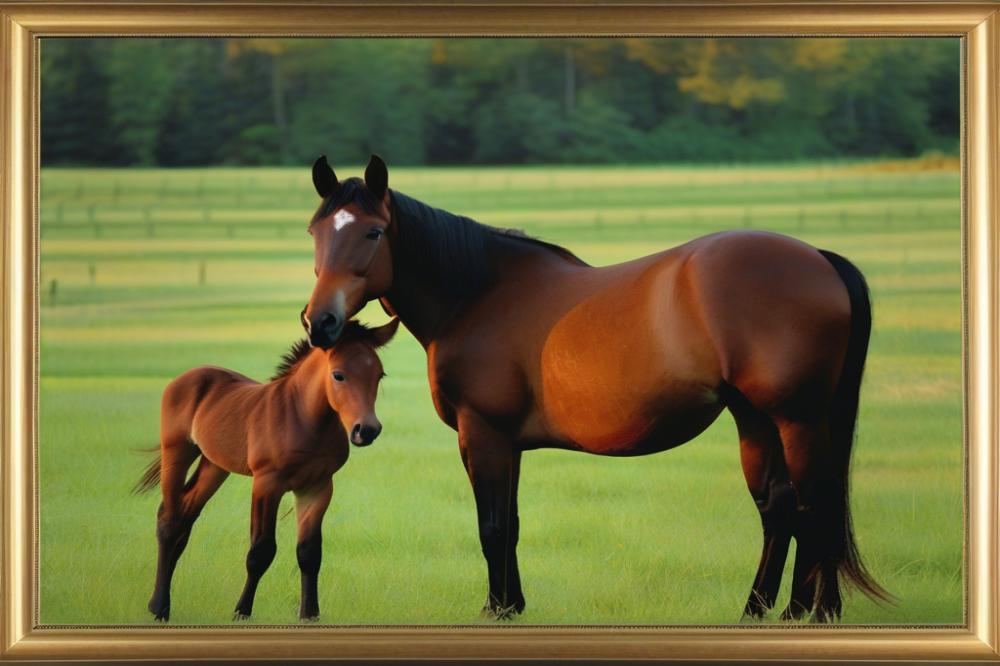Preparing Your Mare for a Successful Breeding Season
The journey of becoming an equine parent begins with proper preparation for your mare. Receiving attention during this time can set the foundation for a successful breeding season. Caring for a mare during this critical period is not just about the physical aspects; it also involves understanding her needs and behaviors.
mare breeding is a significant process that requires careful planning. It is not simply about the act itself; many stages precede it. The reproductive cycle plays a key role in this journey. This cycle determines when your mare is ready to breed. Recognizing the signs of estrus, or heat, is crucial. During this time, the mare’s behavior may change, making her more receptive to a stallion.
Additional factors come into play during breeding preparation. Nutrition, health, and veterinary assistance are all essential for optimizing a mare’s condition. Maintaining a balanced diet strengthens her body for the demands of carrying a foal. Regular veterinary check-ups help catch potential issues early. These steps are vital for overall wellness and ensure the mare’s reproductive system functions properly.
Aiming for a successful breeding season involves creating the most favorable environment for your mare. Timing her breeding correctly can significantly enhance the chances of conception. This is where understanding her cycle’s rhythm becomes invaluable. Equipping yourself with knowledge about reproduction helps guide decisions and actions.
In summary, preparing your mare for breeding is a multi-faceted commitment. It requires vigilance, readiness, and a willingness to adapt to her unique needs. Taking these steps seriously will lead to a healthier mare and ultimately a better chance of welcoming a new foal into the world.
Understanding mare breeding

Mare breeding is the process of mating a female horse to produce a foal. This practice has great importance in the equine industry. Successful breeding can lead to healthy, high-quality horses that excel in various disciplines.
Reproductive management is essential for optimizing breeding efforts. Regular veterinary check-ups help monitor the mare’s health and reproductive cycles. This monitoring includes tracking heat cycles and addressing any ovulation concerns. Owners should keep detailed records to spot patterns and anticipate the best time for breeding. Nutrition and exercise can influence fertility, so balanced feeding and adequate movement are crucial. Moreover, understanding the mare’s behavior can aid in identifying the right moments for breeding. Special attention to these details prepares the mare for a successful season.
equine health and Pre-Breeding Assessment

Maintaining equine health is essential for successful breeding. A healthy mare is better equipped to conceive and carry a foal. Neglecting health can lead to complications later on. The role of veterinary care cannot be overstated. Regular check-ups allow veterinarians to monitor the mare’s overall well-being. These visits help catch potential issues before they become serious.
Vaccinations play a critical role in keeping horses healthy. Protective measures against diseases are necessary, especially during breeding season. Discuss with a vet which vaccines are most relevant for your mare. Deworming protocols are also important. A dewormed horse is less likely to have parasites that could affect fertility. Working with a veterinarian to create a proper deworming schedule is wise.
A pre-breeding evaluation is another step to take. This assessment includes a thorough examination of the mare’s reproductive system. Vets often conduct ultrasounds to check for ovarian activity. Blood tests can also provide valuable information about hormone levels. Checking for any underlying health issues helps minimize risks during pregnancy. A clean bill of health will make breeding smoother.
Nutrition for Breeding Success

Nutrition plays a crucial role in preparing your mare for breeding. A well-balanced diet supports her overall health and reproductive functions. Horses, like many animals, require a variety of nutrients to perform at their best. Ensuring that your mare receives the right nutrients can significantly enhance her chances of conception.
Essential Nutrients and Dietary Requirements
Key nutrients include proteins, vitamins, and minerals. Proteins are vital for tissue development and overall growth. They help produce eggs and support fetal development. Additionally, vitamins such as A, D, and E are essential for reproductive health. Mineral requirements often include calcium and phosphorus, which are crucial for strong bones and overall health.
Beyond these, omega fatty acids can improve fertility rates. These fats help regulate hormone levels and support cell function. It’s important to incorporate a variety of feed types, including forages and commercial grain mixes, to meet all these dietary requirements.
Feeding Strategies to Enhance Fertility
Implement consistent feeding strategies for optimal results. Regular meal timings can help maintain steady nutrient uptake. Consider the use of high-quality hay and grains. They provide energy and necessary nutrients, leading to better body weight and health. Keep in mind that introducing specialized supplements should be part of your overall feeding plan.
Some owners choose to limit sugary treats, as they can cause energy spikes and dips. Instead, focus on feeding balanced meals to promote steady energy levels throughout the day. Hydration is equally important. Fresh water should always be available to support overall health and metabolic processes.
Importance of Body Condition Management
Body condition is a key indicator of a mare’s readiness for breeding. Maintaining an ideal weight can directly affect reproductive success. A body condition score (BCS) between 5 and 7 on a scale of 1 to 9 is often considered optimal. Too thin or too heavy can lead to fertility issues and complications during pregnancy.
Regularly monitor your mare’s weight and adjust her diet accordingly. Weight gain or loss can be gradual but should be closely monitored. Use a combination of diet adjustments and exercise to achieve the desired condition. Remember, every mare is different and may require tailored approaches for the best results.
Understanding Heat Cycles and Estrus Detection
Every mare has a reproductive cycle, which is important to understand for successful breeding. This cycle lasts on average about 21 days. However, variations can occur. The cycle consists of several phases, including estrus, when the mare is most fertile.
The Mare’s Reproductive Cycle
The reproductive cycle begins with the estrous phase, also known as heat. During this time, hormonal changes prepare the mare for possible mating. Follicles in the ovaries mature and release hormones like estrogen. This hormonal dance is essential for her fertility.
Signs of Estrus and Heat Cycles
Recognizing signs of estrus can greatly enhance your breeding outcomes. A mare in heat may display certain behaviors. She often becomes more affectionate, seeking attention from other horses. Some may urinate frequently or exhibit a particular stance known as lordosis. This posture signals receptiveness to a stallion.
Techniques for Effective Estrus Detection
Monitoring your mare closely is key to effective detection. Daily observation allows you to notice subtle changes in behavior. Many breeders find it helpful to keep a breeding calendar. Marking the days when your mare shows signs of heat can help predict future cycles.
Employing other techniques, such as using an experienced stallion to tease the mare, can also be beneficial. This method helps confirm readiness for breeding. Also, tools like ultrasound and hormone testing can provide insights into her cycle.
Timing the Breeding for Optimal Results
Timing is crucial when planning for breeding. The best moment for mating is typically 12 to 24 hours after the mare shows signs of being in heat. This period usually coincides with the peak of her fertility. Planning visits with a stallion during this window can improve success rates.
Watching your mare attentively and understanding her cycles lead to better breeding outcomes. Knowledge is power when it comes to successful reproduction. Stay informed and prepared, and your efforts will pay off.
Stallion Selection
The choice of a stallion plays a crucial role in the breeding process. Selecting the right one can greatly influence the future of your foals. With so many options, it’s essential to identify the qualities that matter most for your specific goals. Passionate breeders know this decision can shape the lineage for generations.
Evaluating stallion traits involves examining several factors. Conformation should be assessed first. A well-structured stallion often passes on desirable physical characteristics to offspring. Additionally, genetic potential can be a game-changer. Investigating bloodlines helps reveal inherited qualities, both good and bad.
Compatibility between the mare and stallion is another key aspect. Bringing together contrasting traits can yield healthier foals. It’s also necessary to consider temperament. A calm and trainable stallion paired with a spirited mare can create a balanced offspring. Always keep your long-term breeding goals in mind throughout this process.
Gathering information on a stallion’s performance is vital too. Reviewing competition records can highlight traits like speed, agility, and endurance. Positive feedback from other breeders can provide additional insight. Remember, past success is often an indicator of future potential. Prioritize research to make an informed choice.
Breeding Techniques and Hormone Management
Overview of Breeding Techniques
Natural breeding involves a stallion covering a mare. This method can be straightforward, allowing the horses to mate naturally. On the other hand, artificial insemination (AI) uses collected semen to breed without direct contact between animals. Both methods have their benefits. Many breeders prefer artificial insemination due to its flexibility and ability to manage genetic traits.
Importance of Hormone Management for Synchronization
Hormone management is crucial during the breeding season. By synchronizing a mare’s heat cycle, breeders can increase the chances of successful mating. Hormones like progesterone and estrogen play vital roles in these cycles. Proper management can help determine the best time for breeding, whether natural or through AI. Understanding a mare’s hormone levels allows for better planning.
Procedures for Artificial Insemination
Artificial insemination requires careful technique. First, a veterinarian should evaluate the mare to determine her cycle status. Once the optimal timing is established, collected semen is prepared for insemination. This process involves inserting a catheter into the mare’s reproductive tract to deposit the semen. Precision is key here to enhance the chance of pregnancy. Breeders often choose AI for its convenience and ability to use high-quality semen from distant stallions.
Understanding Reproductive Technologies
Reproductive technologies have evolved over the years. Techniques like embryo transfer and cryopreservation have changed breeding possibilities. With embryo transfer, a fertilized egg is removed and placed in another mare to carry to term. Cryopreservation allows semen, embryos, or oocytes to be frozen for later use. These advancements offer new opportunities for breeders, allowing them to manage their herd more effectively. Embracing these technologies can lead to healthier offspring and improved breeding success.
Preparing for Foaling
Importance of foaling preparation
Preparing for the arrival of a new foal is crucial for both the mare and the owner. Taking the right steps can make a big difference in ensuring a healthy birth. A well-prepared environment supports both the mother and her newborn. Foaling can be a stressful time, and every little detail matters. Anticipating the needs of your mare will help her feel secure and comfortable during this important time.
Identifying signs of approaching foaling
Recognizing the signs that your mare is about to give birth can help you respond appropriately. Many mares display certain behaviors as they near foaling date. Look for changes in their attitude, such as restlessness or nesting behaviors. Their udder may also swell, and you might notice milk dripping. A drop in their belly can occur as the foal shifts positions, signaling that the time is near. Staying alert to these signs allows you to be present when your mare needs you most.
Setting up a safe environment for foaling
Creating a safe and calm space for foaling is essential. A clean, dry stall with plenty of bedding will help avoid complications during birth. Ensure that the area is free from sharp objects and hazards that could harm the mare or foal. Providing adequate room for the mare to move comfortably is important. Enough light is necessary for you to observe the process easily. Consider allowing her access to the outdoors if the weather permits, as fresh air can ease stress.
Understanding care for the newborn foal
Newborn foals require special attention right from the beginning. Once the foal is born, they should stand and nurse within a few hours. This initial nursing is crucial for receiving colostrum, which provides essential nutrients and antibodies. Keeping the foal warm is also extremely important, as they are vulnerable to cold. Monitoring both the mare and foal for the first few weeks is important for spotting any issues early. Regular check-ups with a vet can help ensure everything remains on track as the foal grows.
Final Thoughts on Preparing for Breeding Season
To sum up, several key steps can greatly influence success in breeding your mare. First, ensuring that health is a priority is critical. Regular veterinary check-ups help in identifying any underlying issues that may affect reproductive performance. Also, a proper nutrition plan is essential. Feeding a balanced diet tailored to your mare’s specific needs can promote overall well-being and readiness for breeding.
Additionally, familiarity with the reproductive cycle of your horse can aid in timing. Understanding when she is in heat allows for optimal mating opportunities. Take advantage of advancements in reproductive management to increase your chances of a successful breeding. Utilizing ultrasound technology and hormone therapies can be beneficial during this time.
Preparation and attentive care cannot be overstated. Owners who invest time and resources into this process often see better outcomes. A healthy and well-prepared mare not only improves fertility but also supports equine health during the entire breeding season.
Encouragement goes a long way. Taking each step seriously and with intention can make all the difference. Don’t rush the process or overlook the details. This commitment will pay off in the long run, leading to a rewarding experience for both you and your mare.



